Abstract
Gamma radiation at doses of 300 Krad or more inhibits the ripening of Bartlett pears (Pyrus communis L.). Immediately after irradiation there is a transitory burst of C2H4, which subsequently declines in fruits subjected to inhibitory doses. Ethylene production associated with ripening begins at the same time in unirradiated fruits and those subjected to noninhibitory doses, but the latter produces much more C2H4 at the climacteric peak. Fruits subjected to inhibitory doses produce low levels of C2H4 unless subjected to exogenously applied C2H4, whereupon they produce enough of the gas to induce ripening in unirradiated fruits.
Pears subjected to 300 and 400 Krad of gamma rays did not ripen even when held in a flowing atmosphere containing 1000 ppm of C2H4 for 8 days at 20°. It is concluded that the action of gamma rays on Bartlett pears involves both an inhibition of C2H4 production and a decreased sensitivity of the fruit to the ripening action of the gas. Ripening of Bartlett pears is inhibited by gamma radiation only when applied to preclimacteric fruit.
Full text
PDF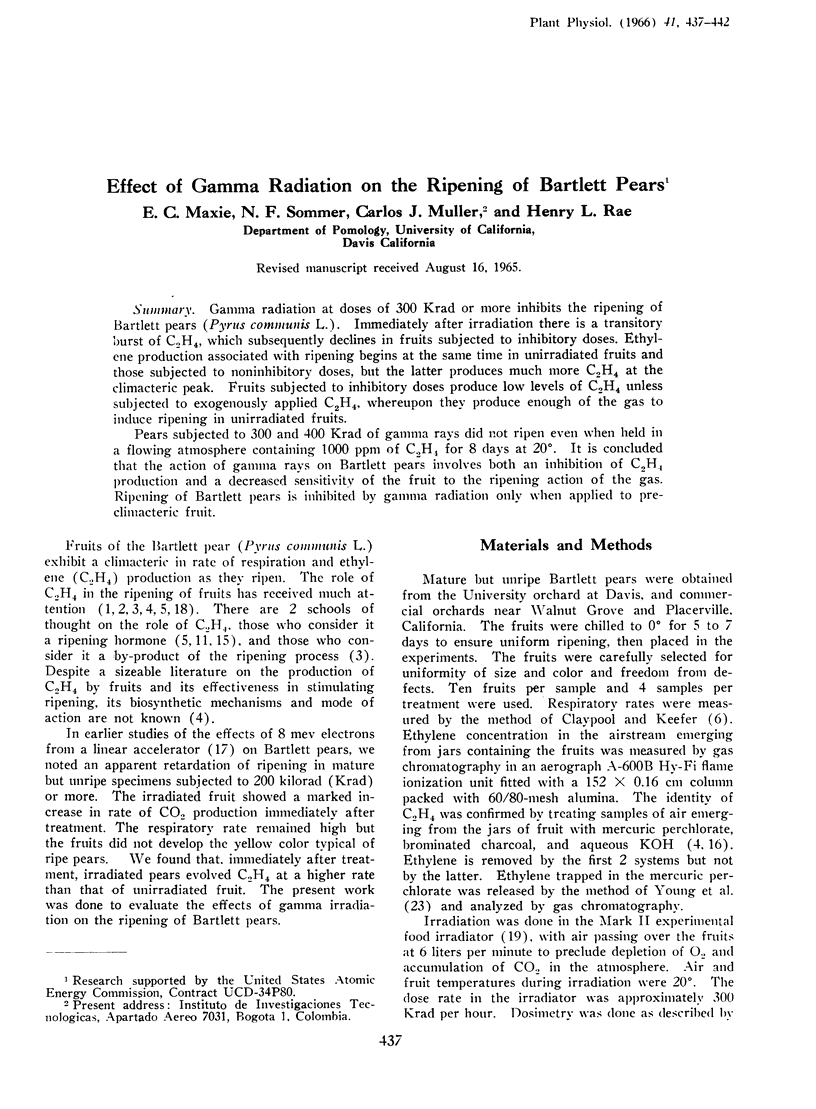

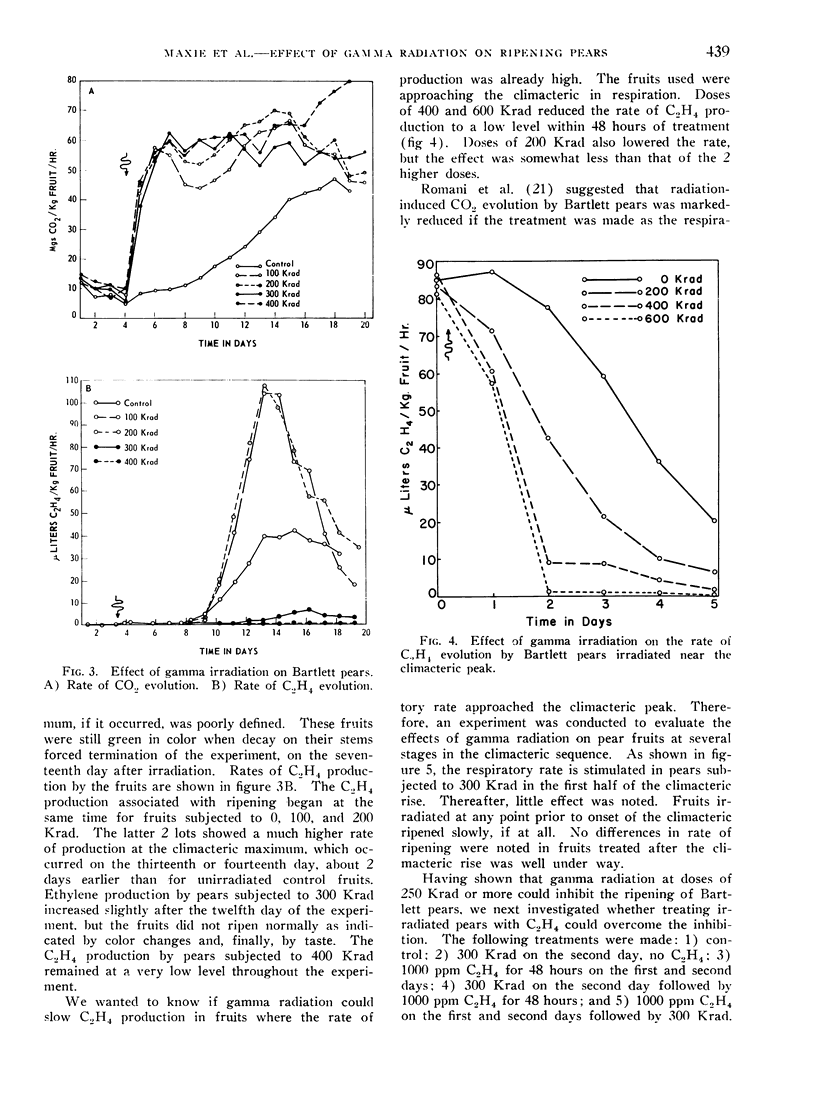
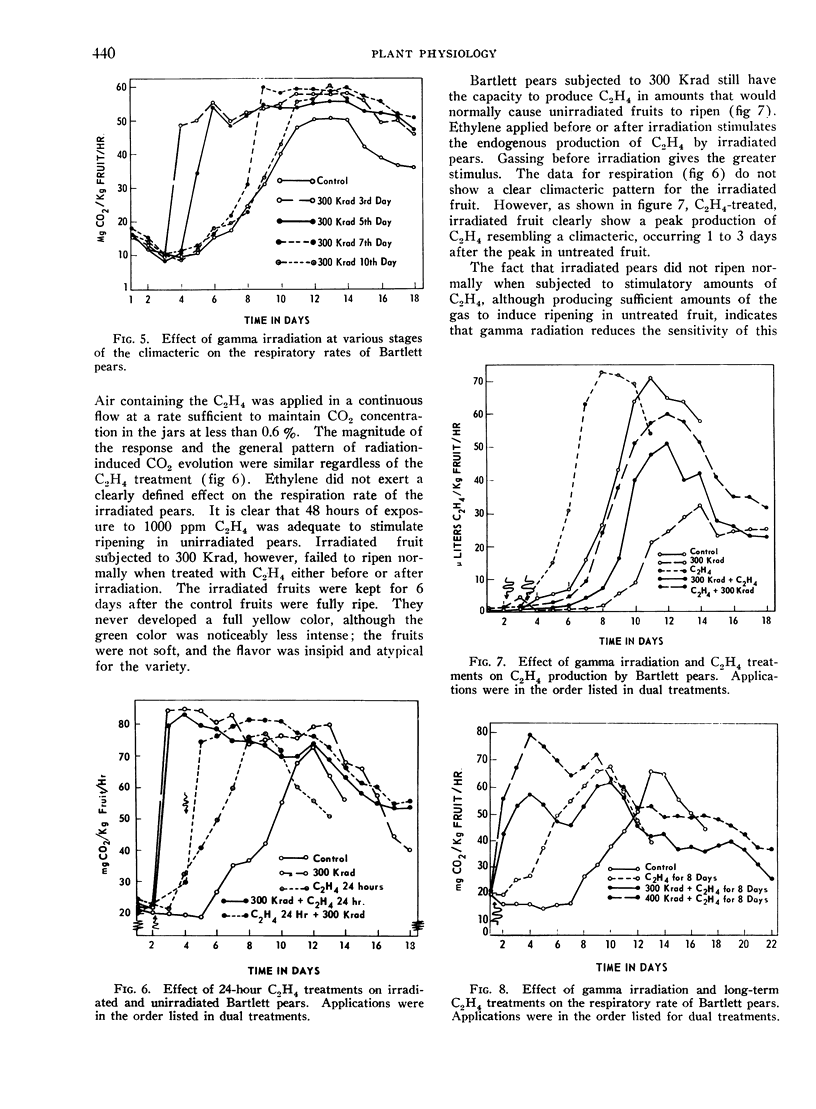
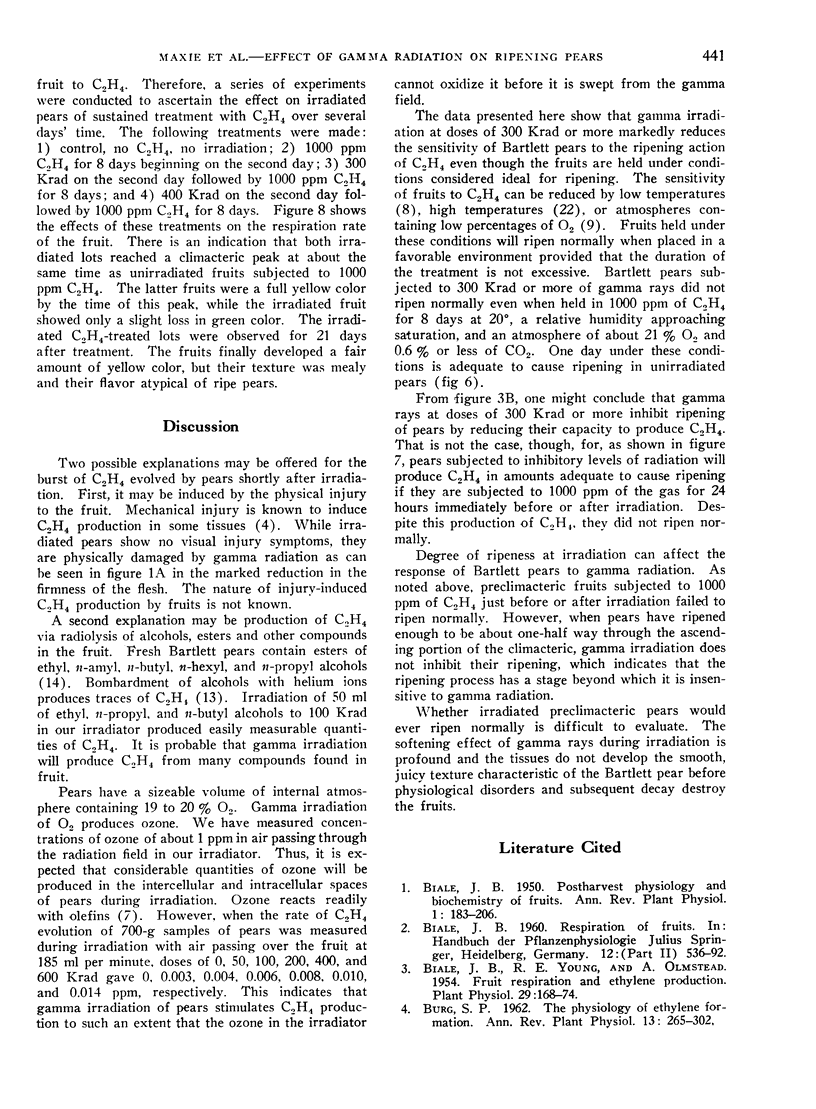
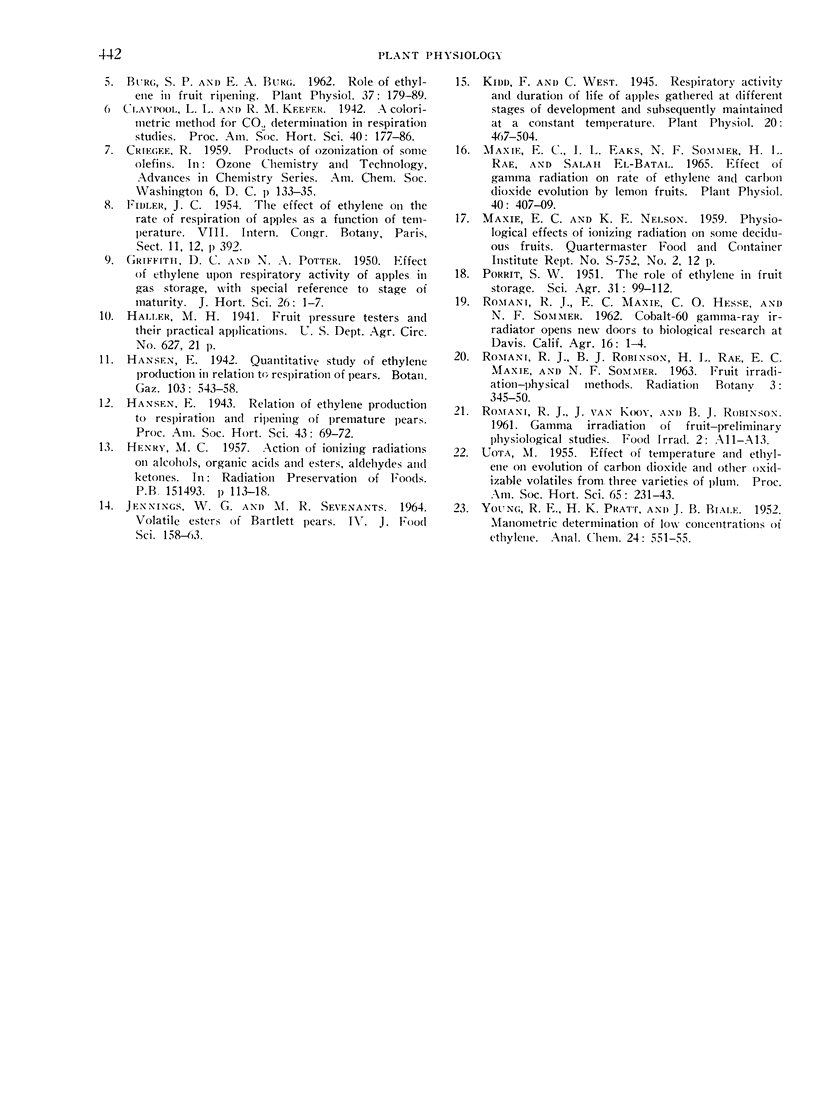
Selected References
These references are in PubMed. This may not be the complete list of references from this article.
- Biale J. B., Young R. E., Olmstead A. J. Fruit Respiration and Ethylene Production. Plant Physiol. 1954 Mar;29(2):168–174. doi: 10.1104/pp.29.2.168. [DOI] [PMC free article] [PubMed] [Google Scholar]
- Kidd F., West C. RESPIRATORY ACTIVITY AND DURATION OF LIFE OF APPLES GATHERED AT DIFFERENT STAGES OF DEVELOPMENT AND SUBSEQUENTLY MAINTAINED AT A CONSTANT TEMPERATURE. Plant Physiol. 1945 Oct;20(4):467–504. doi: 10.1104/pp.20.4.467. [DOI] [PMC free article] [PubMed] [Google Scholar]


